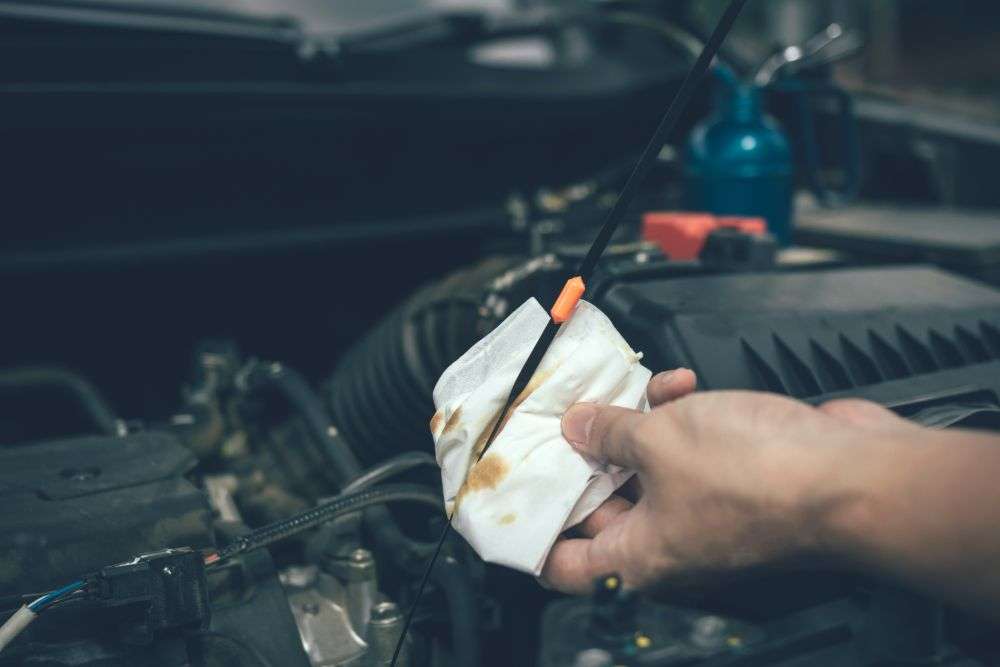Automotive transmission fluid is one of the most important fluids your car needs. It’s what makes your gears shift smoothly and it prevents overheating. When you change the transmission fluid, not only do you improve performance but can also extend the life of your vehicle significantly.
But how often should you change it? That depends on a few factors, including mileage, driving habits, type of transmission fluid used in your vehicle, and more! If you’re unsure whether or not to go ahead with that next oil change then read this blog post now!
Automotive transmission fluid: Why it is needed?
Automotive transmission fluid is the lifeblood of your vehicle’s engine. It is a vital component of your car that keeps its moving parts lubricated and properly aligned so you can enjoy smooth driving.
It helps to distribute and send power from one part or component throughout a machine so that it can be used by others nearby in order for all aspects to work together as intended (and stop breaking)!
Transmission fluid is an important component of your transmission, which allows the car to move smoothly. It helps transfer power from one gear cluster and distributes it throughout all four wheels for maximum traction on slippery surfaces like snow or ice (or just about any other time).
The transmission fluid needs to be changed when the first bottle is gone. But some people don’t notice this until they have bought another bottle of transmission fluid, and then it’s too late.

How often should I change my transmission fluid?
A lot of people don’t know the answer to this, but it really depends on how long you plan on driving with one fill-up.
Automatic Transmission vehicles:
Automatic transmission can create more heat than a manual transmission. This is because the fluid that it uses will break down and degrade with use. Automatic Transmission fluid can also become contaminated with worn bits over time.
The frequency of fluid changes for automatic transmissions can be very different from car-to-car. It might be done every 50,000km (or 30,000 miles) or the car may never need to have it change at all.
Manual Transmission vehicles:
Manual transmission should have its transmission flue changed every 50,000km to 100,000km (or 30,000 to 60,000 miles)
Over time, manual transmission fluid can become contaminated, as the synchronizers, bearings, and gearboxes in the transmission wear down.
When metal particles break off from a machine, they can float around in the lubricant. The oil that contains little metal particles does not lubricate as effectively if these foreign matters are not eliminated. If these contaminants are not removed, they will decrease the life of your transmission.
What are the consequences of not changing your transmission fluid
The transmission fluid in your car helps to lubricate the gears, which allows them to move smoothly. If you don’t change your transmission fluid regularly, then the oil gets dirty and will eventually lead to a damaged transmission.
The oil also helps keep heat from damaging the metal parts of the gearbox. Changing your automotive transmission fluid is an easy way to help protect both yourself and your vehicle from costly repairs down the road.
Changing your vehicle’s transmission fluid is a simple and inexpensive method to keep it working properly for many years. It just takes a few minutes and costs around $30-100 each year if you do it yourself, or $150-$300 if done at a dealership. The cost of not changing the transmission fluid is far greater than the cost of doing so once a year.

Signs that you may need to change your transmission fluid soon
If you notice any of these symptoms, you should take your car into the shop to get the transmission fluid changed:
- If your car is making a humming noise while driving
- You hear a whining or grinding sound when accelerating
- You notice your vehicle’s check engine light flashing on and off
- When you’re going up hills and the engine feels like it’s struggling
- When the transmission fluid looks dirty or smells like burning rubber
- The transmission fluid level is low
- If you notice your vehicle hesitating when accelerating from a stop
- The gear shifts are rough, making it difficult to get out of first gear
- When you hear grinding noises from under the hood, which can indicate metal-on-metal contact in the gears of your transmission
- Your transmission fluid is leaking from underneath your vehicle
- Your transmission fluid is brown or black instead of red
- There are metal shavings in the transmission fluid (this indicates a problem with the gears)
- There are visible signs of damage to the transmission system, such as leaking fluids and broken seals or gaskets
Is there anything else I can do to make my car last longer or prevent expensive repairs in the future
Here are some tips to keep your car in good repair:
- Get an engine oil change every 3,000 miles
- Check your tire pressure regularly
- Keep the engine tuned up with regular maintenance
- Drive less than 10,000 miles per year to avoid wear and tear on parts
- Avoid driving in extreme weather conditions like snow or rain for extended periods of time
- Have your car inspected by a mechanic at least twice yearly
BONUS TIP: Don’t ignore warning lights or be afraid that something major may have gone wrong! The best way to avoid the pain of an expensive repair is by taking care of your car.
Conclusion
Whether you drive a manual or an automatic transmission, it’s important to know when and how often your vehicle needs its fluid replaced.
You may be wondering how often you should change your automotive transmission fluid. The answer to that question depends on the type of vehicle, and what level it is at in terms of service life (i.e., mileage). Check the manual from your vehicle manufacturer to see if there are some special requirements.
To keep your car running smoothly for years without expensive repairs, take care of it by keeping up with regular maintenance like changing its fluids regularly–and don’t forget about engine oil changes!

